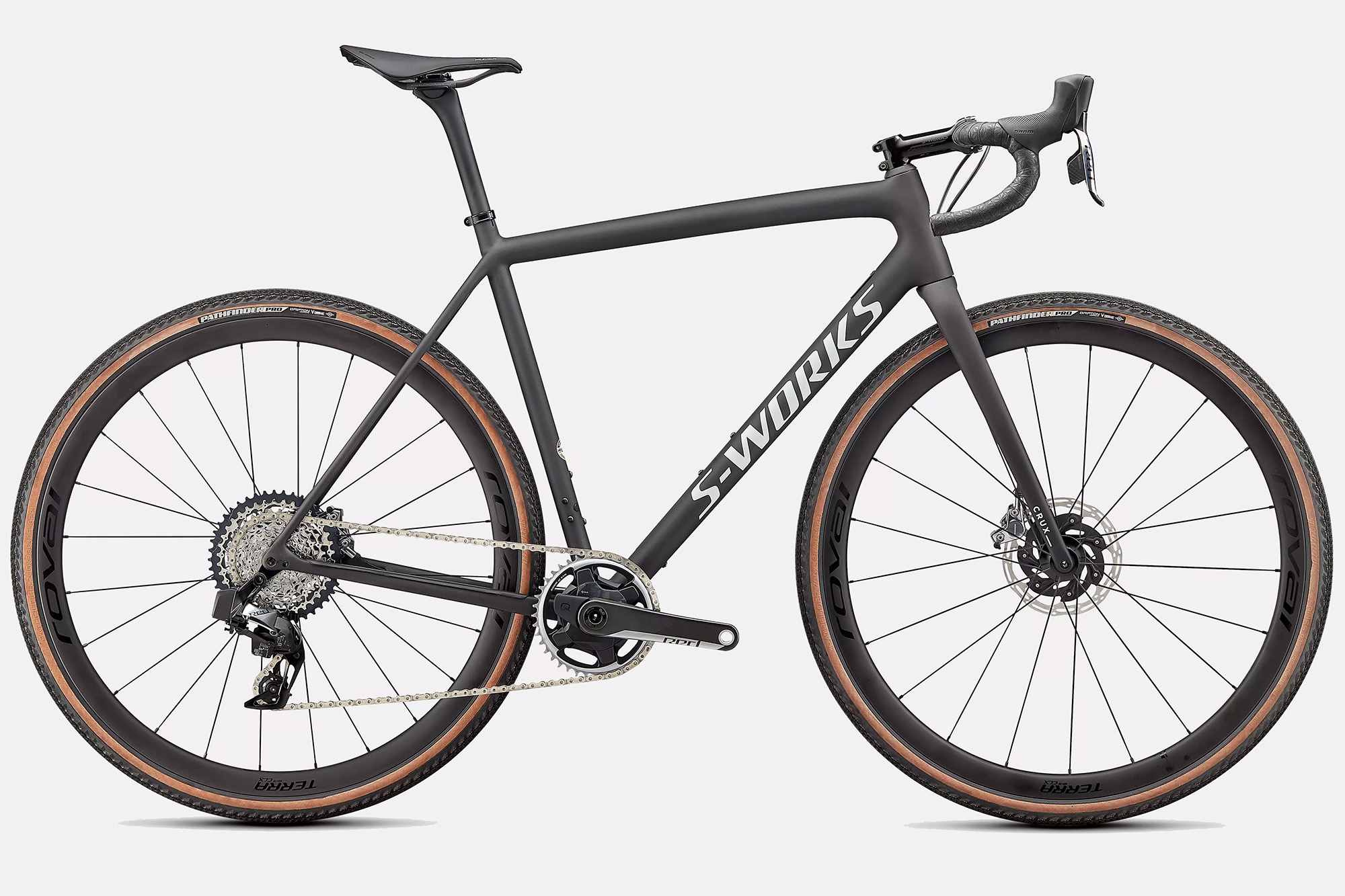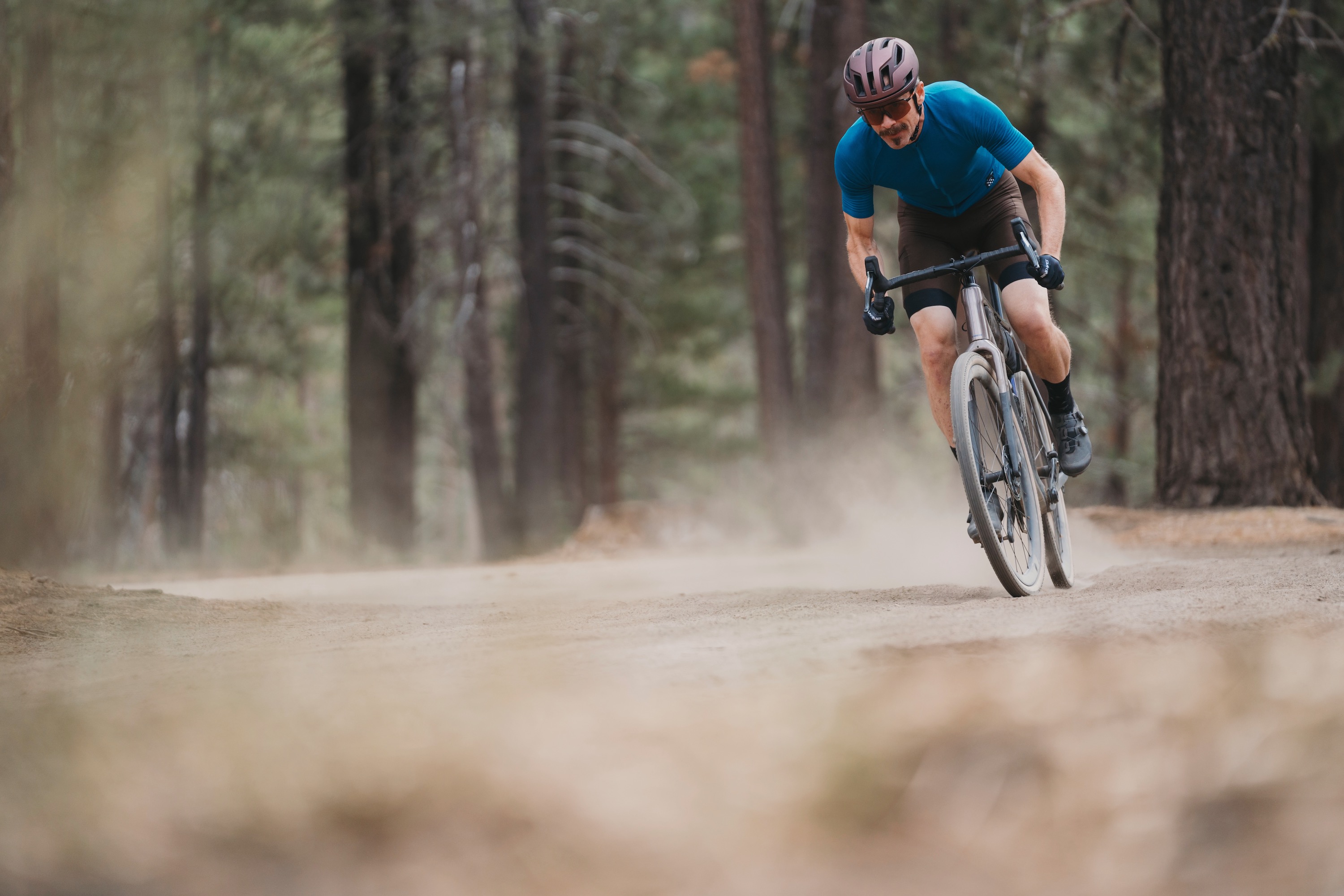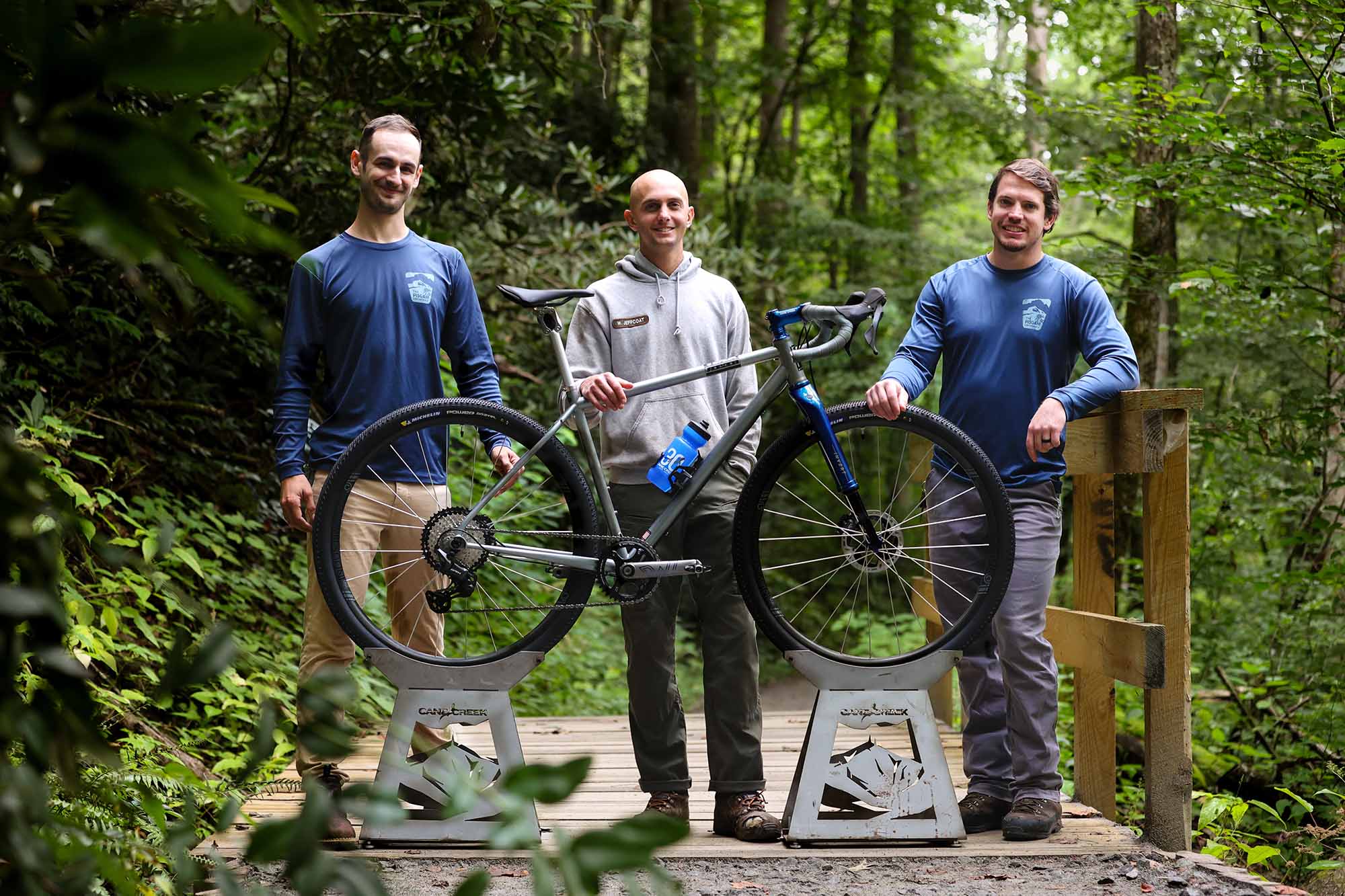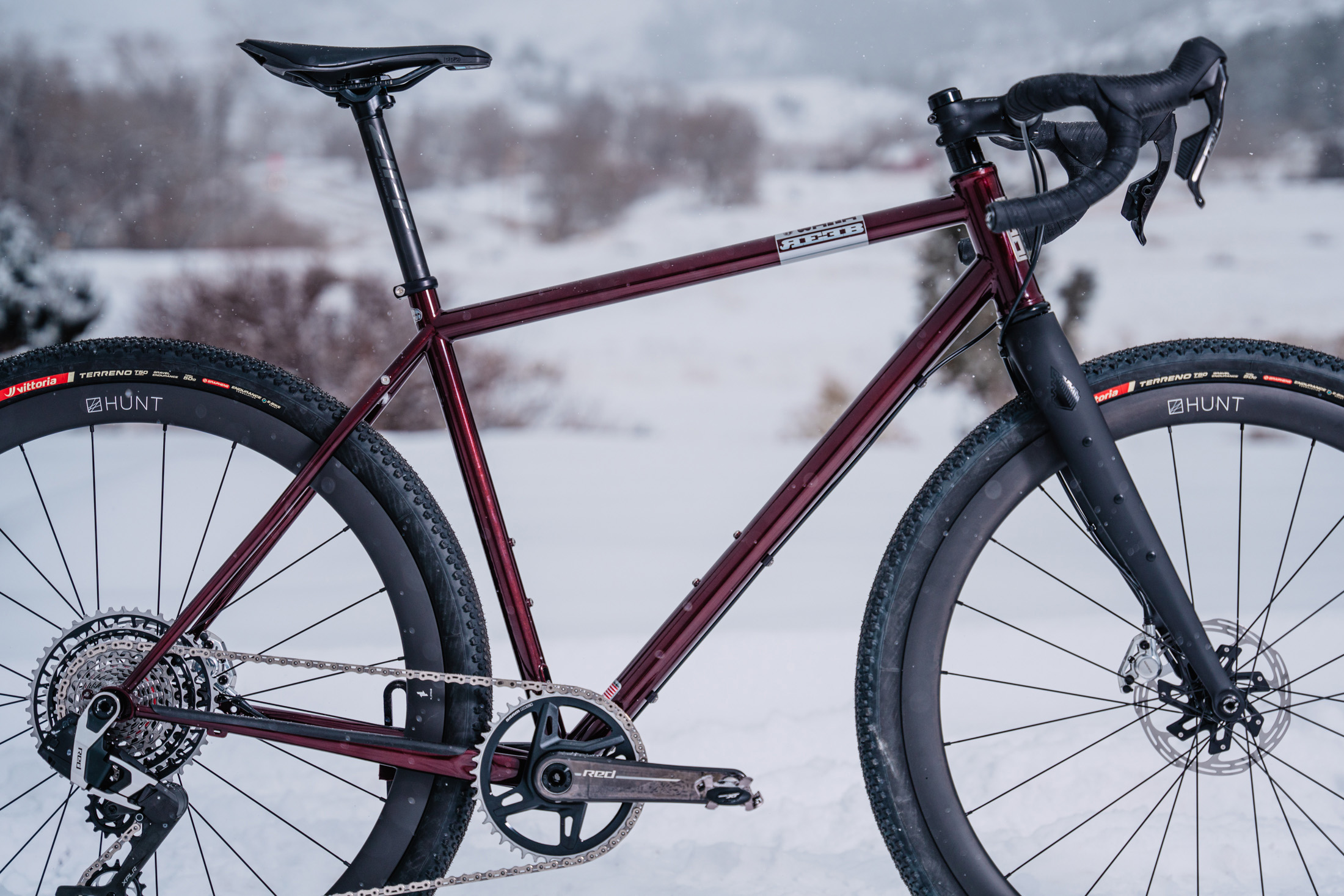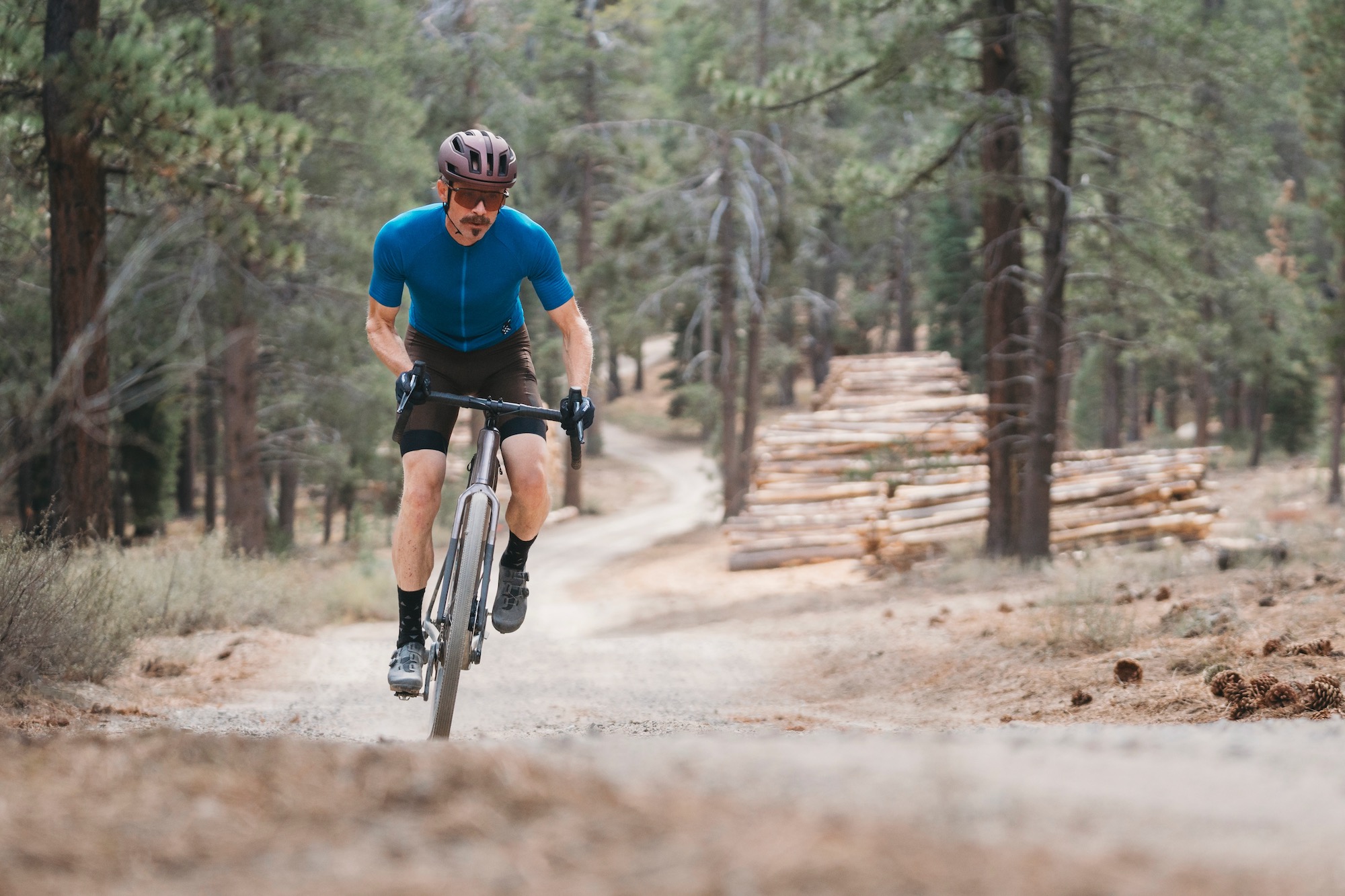The S-Works Crux stands as the gravel and cyclocross version of Specialized’s “most technically advanced bike” — the Aethos. Built with the Aethos construction method, Specialized morphed the S-Works Crux geometry into a mixture of road, cyclocross, and gravel. It is unbelievably lightweight at 15.9 pounds (56cm, no pedals). And the bike promises a unique ride quality similar to the Aethos.
I hammered the Specialized S-Works Crux over dusty, hardpacked, rock-riddled dirt roads for 4 months. Indeed, the ride quality mated well with the unforgiving surfaces I encountered. Having tested the Specialized Aethos, I did feel the results of the shared DNA.
In short: The S-Works Crux is the only bike in the last 5 years I have seriously considered buying with my own money. Though many cyclists point to its feather-light frame as the main callout, the sublime ride quality took center stage for me. From washboard hardpack littered with square-edged rocks to “champagne” gravel, the Crux delivered a veritable magic carpet ride: smooth but somehow efficiently stiff. The only nicks I uncovered were its unaerodynamic design and lack of frame mounts.
If you are shopping for a gravel bike, check out our comprehensive buying guide.
- Frame material: S-Works FACT 12r carbon
- Fork material: S-Works 12r carbon
- Tire clearance: 47c
- Drivetrain: SRAM Red eTap AXS
- Wheels: Roval Terra CLX
- Sizes available: 49-61 cm
Pros
- Lightest gravel bike
- Incredible ride quality
- Top-notch components and wheels
- "Normal" cockpit allows fit and component adjustments
Cons
- Lacks frame bosses for bags or fenders
- 38c stock tires felt narrow and low volume by today's standards
- Expensive
Editor’s note: At the time of writing, Specialized lowered the price of the bike, as tested, by $3751.
Specialized S-Works Crux Specifications
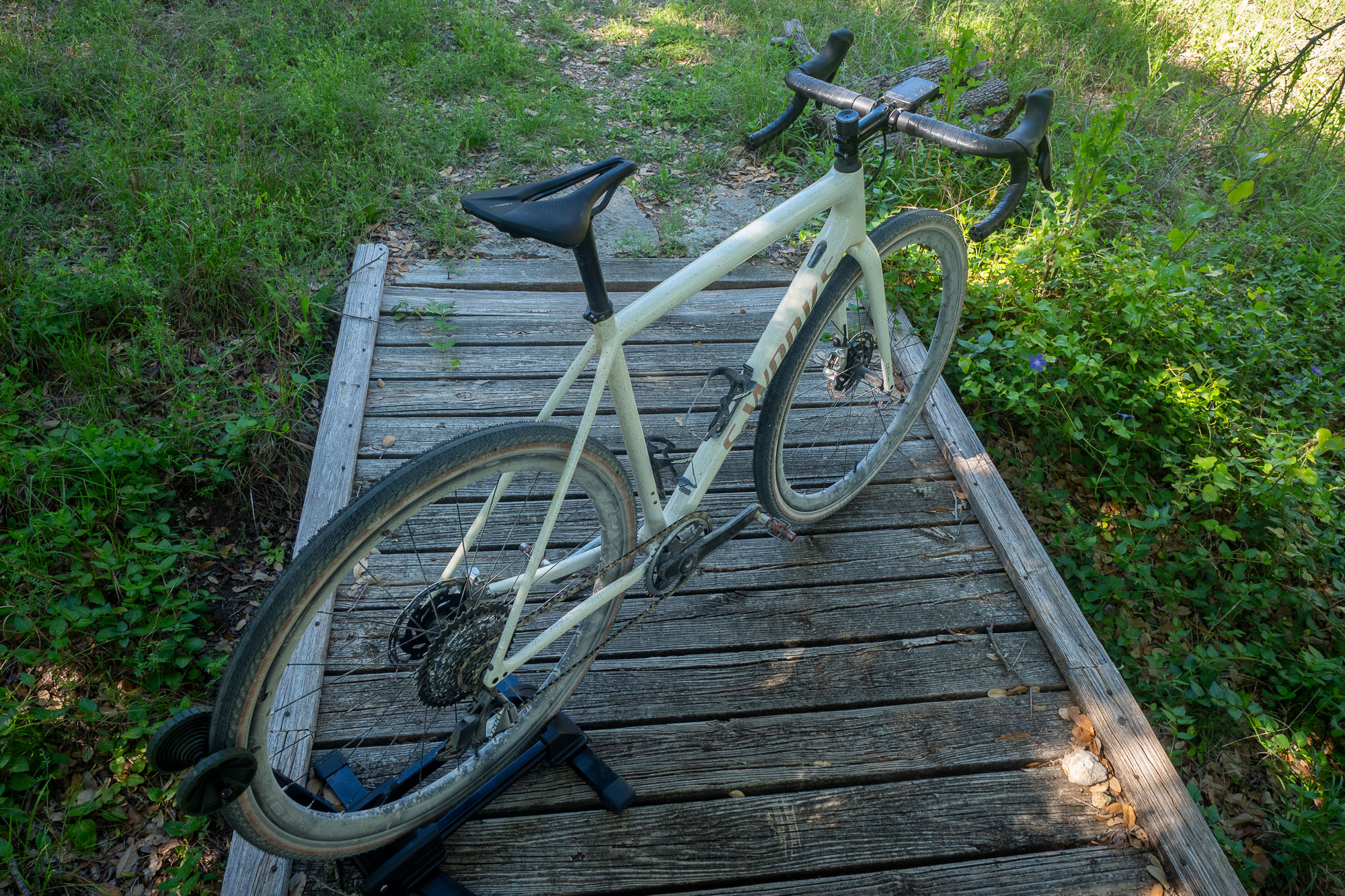
Frame Features
Right off the bat, I have to discuss the incredibly lightweight frame. Specialized claims a 56cm frame weighs a mind-bending 725 g. This weighs less than the full water bottle I had in the bottle cage. To my knowledge, the bike is the lightest gravel bike in existence.
The FACT 12r carbon is the brand’s finest. The minimal material weight, combined with the lack of stiffening layers of other carbon bikes, is a significant part of the featherweight equation. Specialized claims that the shape of the tubes makes up for the lack of stiffening layers. Also, going to larger-diameter frame tubes (a common strategy) isn’t required either.
Tire clearance is 47c for 700c hoops and 2.1″ for 650b. Going against the grain, the frame is not integrated for internal wires or cables. It also doesn’t have routing for a mechanical front derailleur, so it can only run direct-mount electronic versions.
The avoidance of integration matches the other “normal” features on the Specialized S-Works Crux. A standard, two-piece bar and stem combo and round 27.2 seat post (with standard post clamp) was the first “normal” cockpit configuration I’d seen in a while on a top-tier bike. This attribute makes adjustments to the front cockpit possible and opens up options for other seat posts. It also makes packing the bike for travel much simpler.
The bottom bracket is a threaded English (BSA), making replacement or maintenance a snap.
Notably, the Specialized S-Works Crux frame has no mounting points other than two standard water bottle cage mounts and one on the bottom of the down tube.
Racy Geometry
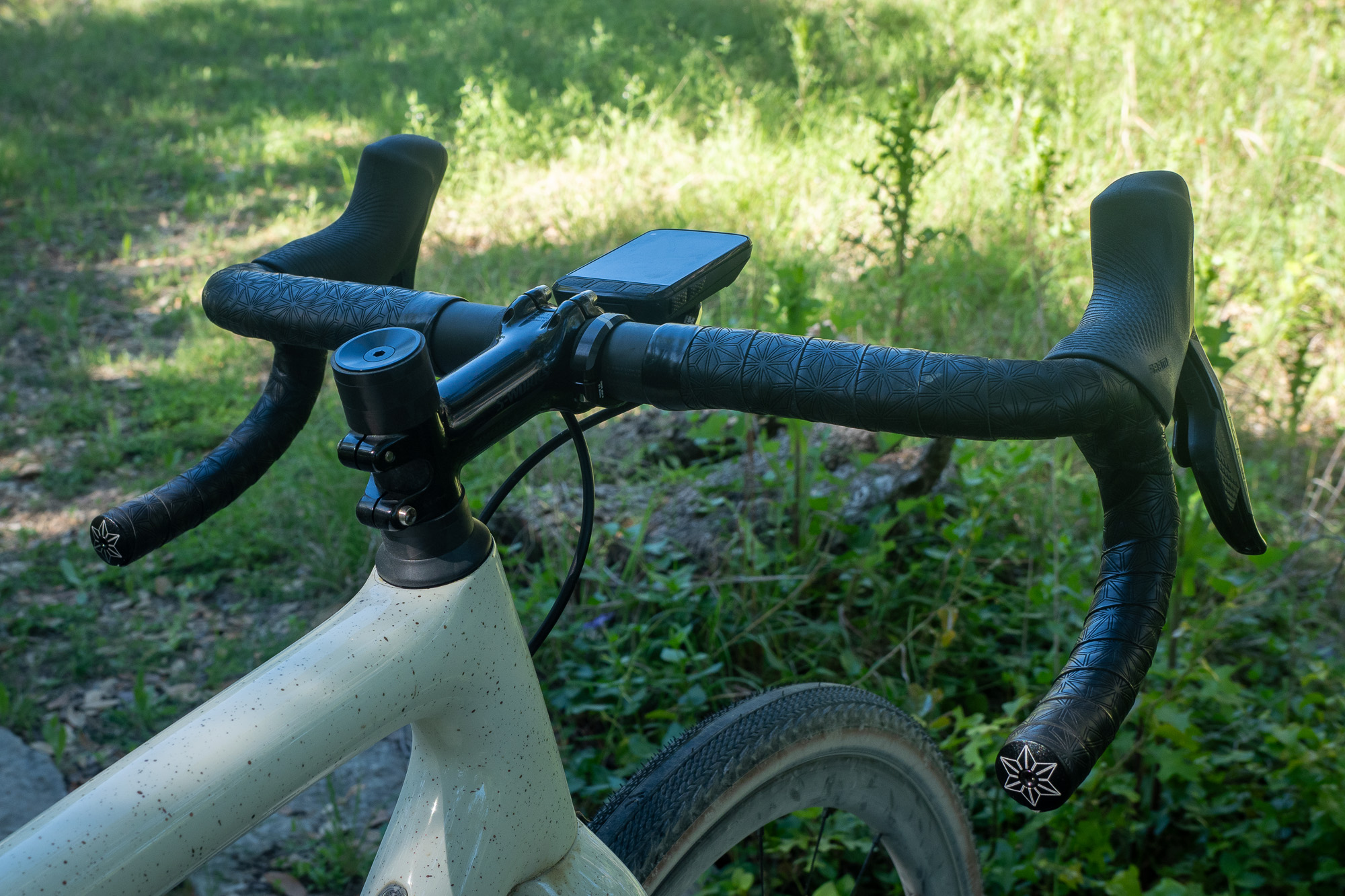
The geometry trait that stands out is that the Crux is long and low: long reach (horizontal distance from the center of the bottom bracket to the top of the head tube), with low stack (the horizontal distance between the same two points). This harkens to its cyclocross racing roots.
My 56cm test rig has a reach of 397mm and a stack of 560mm. The next raciest bike I’ve tested is the Ventum GS1; it sports a 393mm reach and 570mm stack.
On the other side of the spectrum is Specialized’s Diverge. For the comparable frame size, it has a reach of 392mm and a stack of 609mm.
Another notable geometry trait is the relatively high bottom bracket. The 56cm Crux has a bottom bracket drop of 72mm (the distance between the center of the bottom bracket and an imaginary line between the two wheel dropouts).
The racy Ventum GS1 bottom bracket is 2mm higher, but the Diverge’s is 13mm lower. The relatively high bottom bracket on the Crux helps in racing. It adds pedal clearance for obstacles and turns.
Top-Tier Components
Specialized spared nothing when outfitting the S-Works Crux. A full SRAM Red E-tap AXS 1x groupset hangs on the frame, complete with a power meter. House brand Roval supplies its Terra CLX wheelset with Specialized Pathfinder Pro 38c tubeless tires.
A Specialized S-Works SL aluminum alloy stem with titanium bolts clamps a Roval Terra carbon handlebar. A Body Geometry S-Works Power saddle with carbon rails perches on top of a Roval Alpinist carbon seat post. In the racing/weight-weenie spirit, the bolt in the seat clamp is titanium.
The Crux’s aesthetics really played to my older age and road racing upbringing. The small-diameter (by today’s standards) round tubes, slender fork, and non-dropped seat stays give the frame a classic look. The non-integrated cockpit did the same. And the gloss birch red gold pearl speckle paint scheme was attention-grabbing yet elegant.
The Specialized S-Works Crux in the Dirt
The feel of the Crux is hard to explain. As much as engineers say they can “optimize” the layup of carbon pieces, the ride of carbon frames tends to be polarized. These frames skew heavily to a stiff, harsh ride for efficiency (both aero and wattage).
And if the bike is on the compliant end of the scale, there can be more lateral give, which isn’t as efficient and usually means less precise handling.
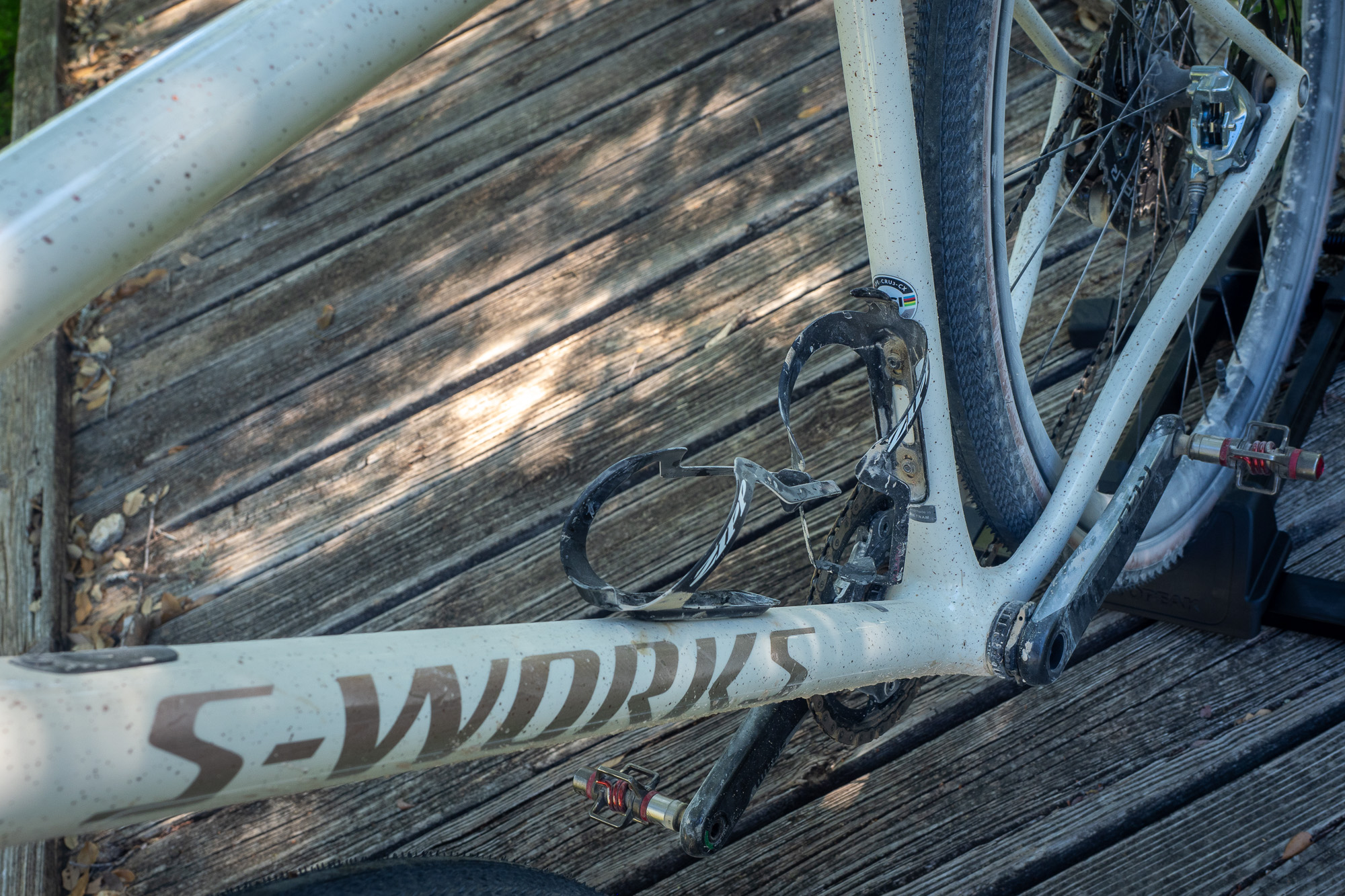
Stiffness and Compliance in the Same Frame
Stomping on the pedals or torquing the ends of the handlebar drops revealed the lateral and torsional stiffness of this most efficient of carbon racing frames.
Yet when I pedaled over gravel chatter, the bike somehow smoothed it out impeccably. It felt laterally rigid, like a bike that would beat you up. But then it soaked up the bumps like a bike that would turn into a noodle if you stepped on the gas. These sensations alone made the S-Works Crux chassis (and the Aethos) a standout in a sea of carbon bikes that are heavily skewed as stiff or compliant.
This duality, combined with the minimal weight, paid dividends on climbs. The lateral and torsional rigidity made the Crux sprightly on the short, savagely steep pitches in my area. Standing on the pedals and pulling on the bars to eke out every last watt was met with immediate power at the rear wheel.
Despite the small frame tubes, the Crux resisted efficiency-robbing deflections better than any bike I was testing at the time. It was like a flyweight delivering punches like a heavyweight.
But if the climb was rough, which it often was, the compliance helped keep the rear rubber biting when standing. It also kept me in a tight line when seated. The frame’s vertical give, combined with the tires, soaked up forces that would either bump the rear tire off the ground or push it laterally out of line. Again, I was bewildered at the duality of the Crux frame.
The Roval Alpinist seat post also added vertical compliance to the Specialized S-Works Crux.
Dreamy Cornering
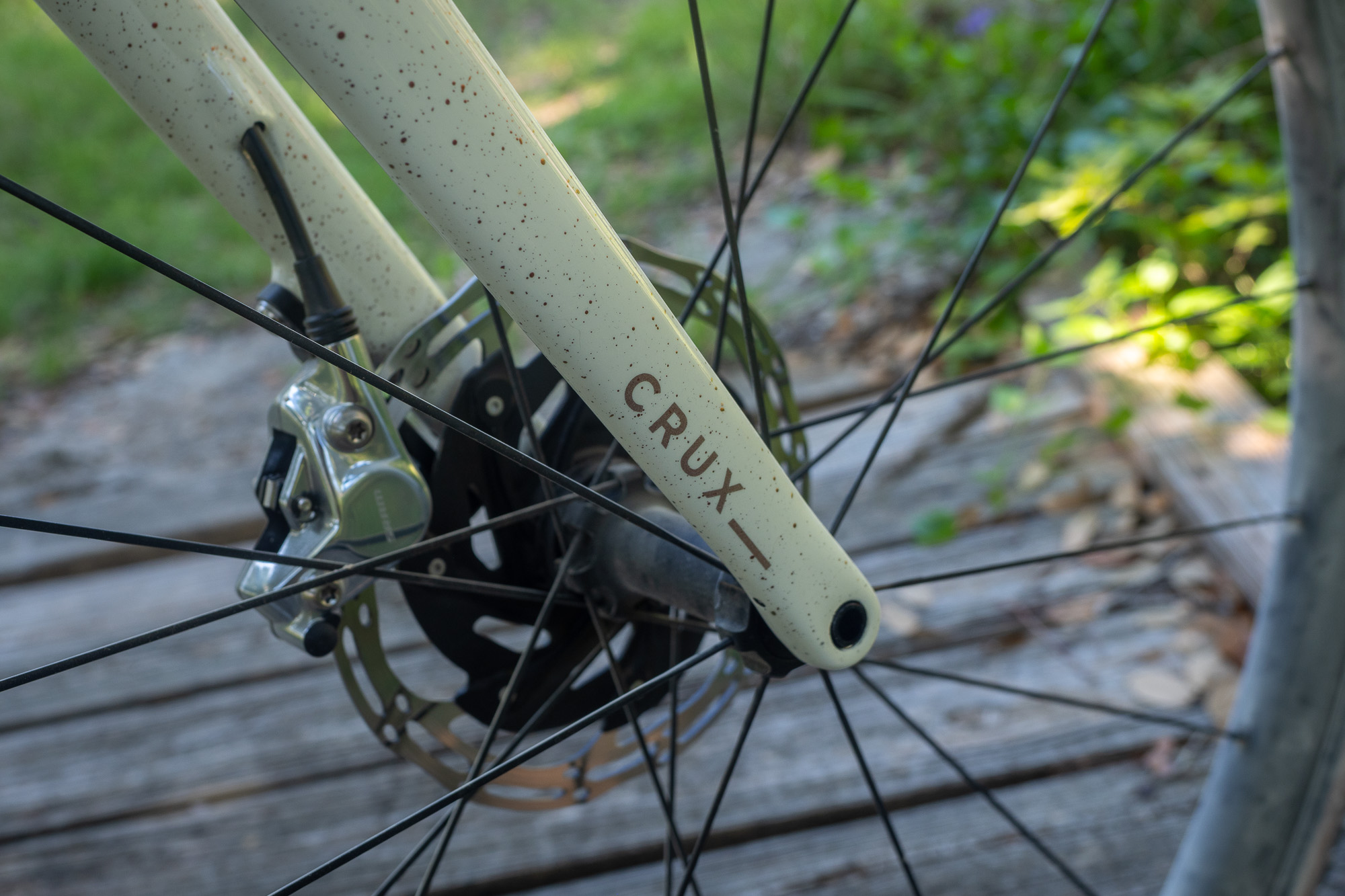
The impressively slender fork had me concerned about cornering. Most of the turns on my regular haunts have tire tracks where the cars push off loose gravel to expose the hard clay base. To carry any speed, I have to stay in the middle of these tracks to avoid lapses in traction while on the sides of the tires. Deviating can lead to a sudden low-side crash (which has put me in bed for a few days).
Cars don’t follow the momentum-sparing line that I use; they can often square the corner and still make speed because they have infinitely more traction and power. To use these lines, I have to dance on the outside of the entering track and cut the apex as close as I can. I must exit to the outside without the front tire getting out of line and into the loose gravel. Precision is critical to carrying any speed without putting myself in the dirt.
I was timid at first because I would look down at the spindly legs of the fork. But I soon realized that it punched way above its weight class, like the frame. I was concurrently testing another gravel bike that had fork blades twice as wide. But the Crux fork was gobs stiffer laterally and torsionally. Within an hour of my first ride aboard, I was railing the tricky turns with confidence, slicing accurate exits like I had ridden the Crux for years.
Some of the sweeping, wide-radius, high-speed turns revealed the magical compliance of the Specialized S-Works Crux chassis. Again, I had to stay in the car tire tracks to stay out of the loose kitty litter. But cars take the same lines in wider turns, so I could really let it fly. Unsure of how the bike would handle at higher speeds on lean, I was timid at first, scrubbing speed on entry when I normally wouldn’t.
But, again, an hour in, I stayed off the binders. The chassis absorbed ripples so the tires’ small contact patches could stay glued to the sun-baked clay. The Pathfinder Pro tires’ excellent bite on hardpack while on an angle (I could hear it) added to my expanding confidence.
Other Specialized S-Works Crux Attributes
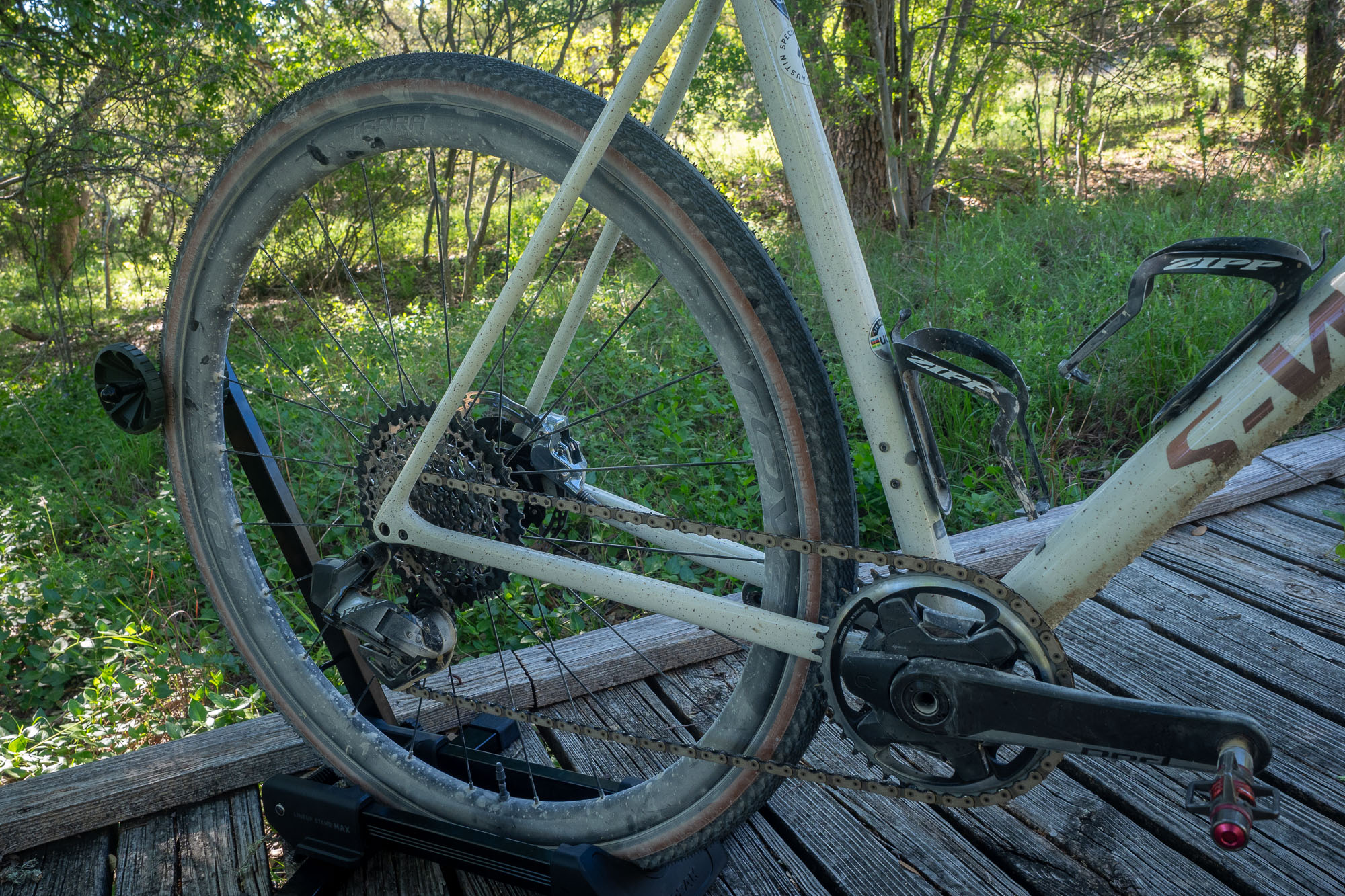
The excellent chassis manners on the Crux match with many of the component characteristics.
Touchpoints
The Specialized touchpoints on the Crux agreed with my body.
The Roval Terra handlebar’s oval top section felt great in my medium-sized hands. It offered plenty of surface area where it mattered but was still small enough for my fingers to overlap with my thumb. The 12-degree flare at the drops on the 42cm wide bars was right at my comfortable limit.
The Specialized Body Geometry S-Works Power saddle fit my narrow pelvic structure well. I can run saddles as narrow as 134mm but my comfortable maximum is the 143mm that Specialized specified on the 56cm Crux.
The saddle visibly looked to be the correct width, but it felt narrower. I didn’t notice the pressure on the upper inner hamstrings like I normally do at that width, but I got the added support of the wider base.
The padding’s density was right on the money for gravel. I’m from the days of the Selle Italia Flite saddle, so I prefer firmer padding. The S-Works Power had the density to keep me supported, with just enough give to keep the chatter at bay. And I never noticed the cutout, which is rare. I actually preferred this saddle over the mightily expensive, high-zoot, 3D-printed Mirror version of this saddle.
The Roval Alpinist seat post added welcome vertical compliance to the Specialized S-Works Crux. I run a 738mm seat height, so I had a moderate amount of post sticking out. It provided noticeable flex and force dissipation, especially on medium-sized bumps and square edges. It would provide even more at taller saddle heights.
Wheels and Components
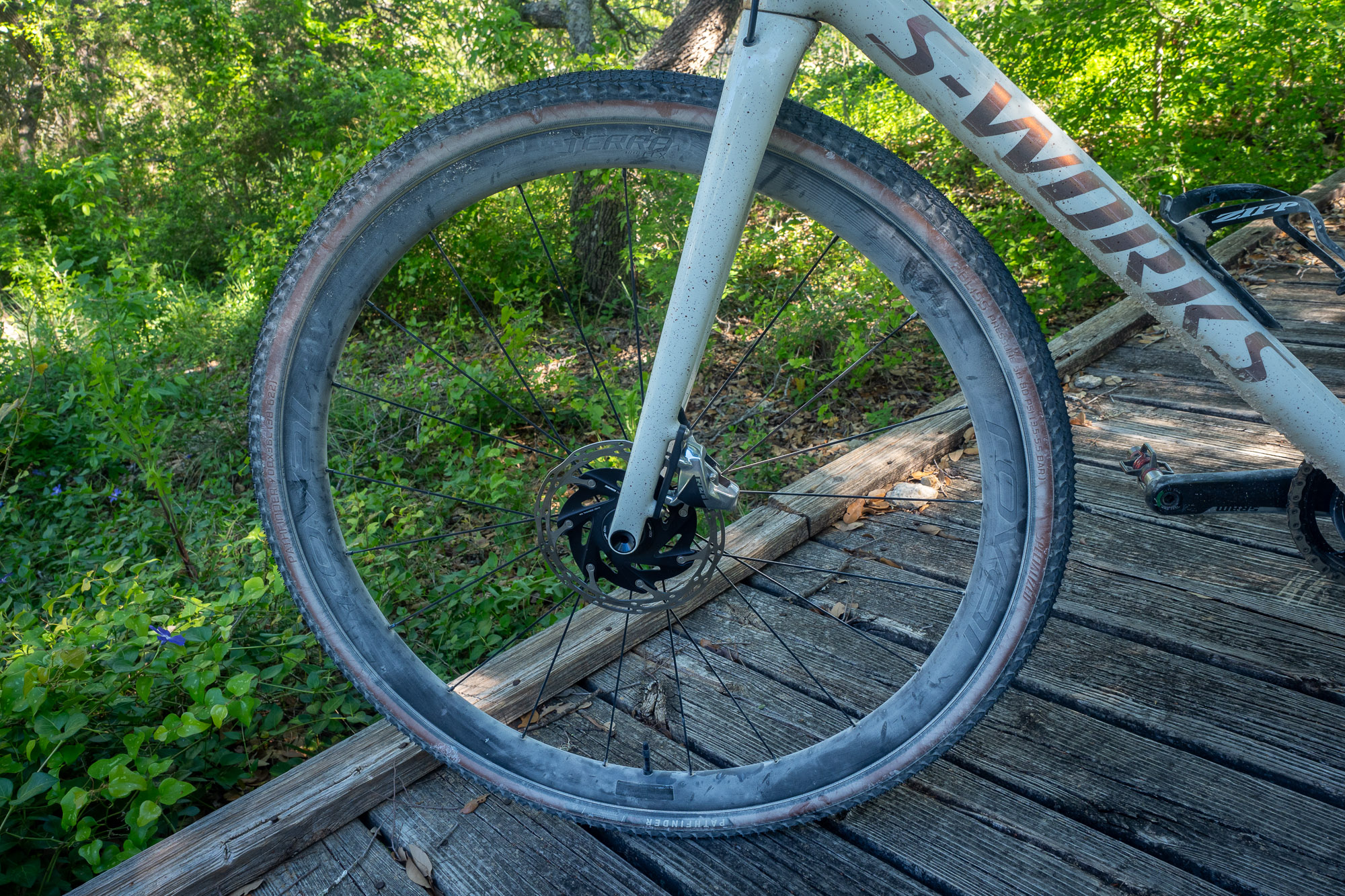
The carbon Roval Terra CLX wheelset, with its claimed sub-1,300g weight (with rim tape and valves!), spun up quickly, which added to the bike’s light feel. This was not a surprise; these wheels are lighter than many road race hoops.
The 32mm depth of the Roval Terra CLX is the middle of the road for modern gravel wheels. Some aero-slanted wheels are taller, and some compliance-oriented models are shorter. That summed up the performance outside of the ones affected by weight; it was middle of the road.
They felt moderately aero and fast on the flats on the tarmac. It was hard to tell because of the high-performance tires and frame, but the compliance also felt moderate.
When picking my way slowly between softball-sized rocks in a dry creekbed, I didn’t feel any appreciable rotational give. When I sprinted for city lights signs on the pavement, I didn’t feel any extra stiffness or flex. It was difficult with the gravel tires to discern these things, but these were my impressions compared to others. I will say that the wheel’s aesthetics and rim depth matched well with the classic-looking frame.
There has been enough written about the SRAM E-tap AXS performance, so I won’t go into it here other than saying it was hard to poke holes in anything the groupset did. It performed remarkably well, and I didn’t touch anything during the test period.
It’s Not All Roses
I know I sound completely enamored by the Specialized S-Works Crux — and I am. But the package had a few dings.
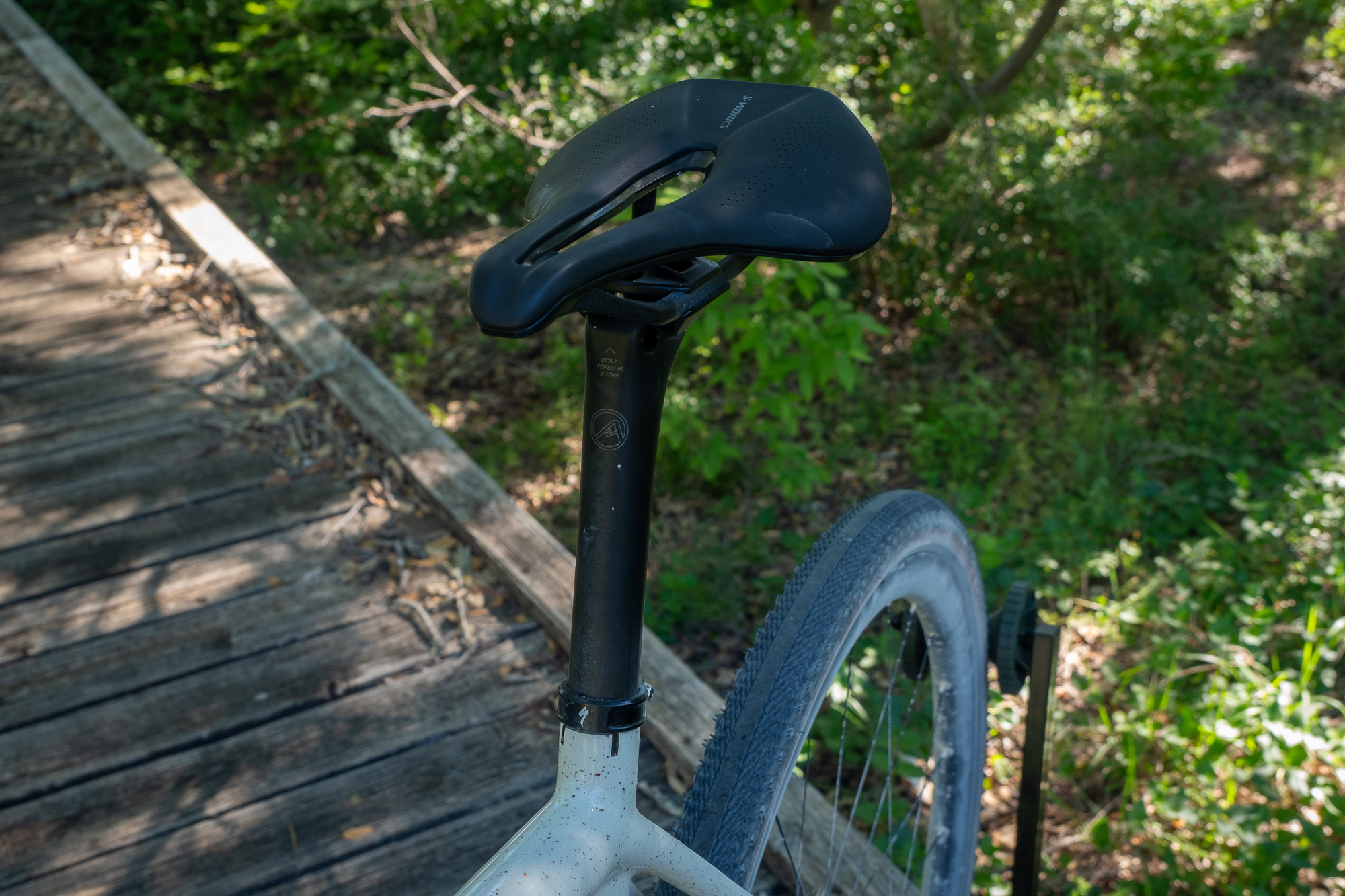
Lack of Frame Bosses
The most disappointing aspect was the lack of mounting points on the frame. Specialized provided only three water bottle cage mounts, which didn’t sit well with me for a gravel bike, race-oriented or not.
Gravel races tend to be very long, and at the absolute minimum, I wanted top tube mounts for a Bento Box. The amount of food necessary to complete a long gravel race necessitates a top tube bag, not only for capacity but also for eating on the go.
Sure, there are top tube bags that don’t require mounts. But I challenge you to find me one that won’t rotate or slide to one side — especially when going over rough terrain.
Also, gravel biking is on the adventurous side, and at the astonishing $12,250 MSRP for this version of the Crux, it’s a tall order to obtain another bike for bikepacking.
The absence of other bag mounts, fender mounts, and fork mounts could be a deal breaker for those who venture beyond a single day’s journey. I realize this isn’t an adventure rig, but many who consider this bike may want at least the option of bikepacking with it.
Tires
The Specialized Pathfinder Pro tires worked amazingly well on pavement. The bald center strip and harder rubber rolled better than any other allroad or gravel tire I have ever tried.
On hardpacked surfaces, the tire was incredibly sticky and confidence-inspiring. But any amount of gravel caused the traction to fall off sharply.
Additionally, even a thin layer of mud rendered the tires almost useless. The smooth center section did what you would expect, which was nothing. And the sides packed up immediately and acted the same.
The Pathfinder Pro was an on-off tire. It was best when it was dry, hardpacked, or pavement. But anything else, and it was time to crawl.
Finally, I would much prefer more volume and width than the 38c Specialized puts on the Crux. If the bike had stayed with me a little longer, I would have switched to 45c on my own dime. The larger volume, lower pressure, and larger footprint would have made everything great about the Specialized S-Works Crux even better.
Specialized S-Works Crux: Final Word
So, who is this $12K+ featherweight gravel racer for?
Obviously, gravel racers will have little to complain about as they speed away on the lightest gravel bike currently sold. The lack of mass combined with the efficient transfer of power, impossibly smooth ride, and the nicest components would satisfy most Lycra-clad speedsters. The only ones who might be on the fence are those who think aero is everything (and there are plenty of those).

But any “student” of cycling would appreciate this bike. Specialized states that the frame is the most advanced it has ever made, and the ride quality displays that technical mastery. The parts spec matches the frame in these aspects. For cyclists who appreciate this level of engineering and manufacturing prowess and the ride quality they produce, I don’t think there is a better gravel bike.
The downsides will concern cyclists who embrace “the spirit of gravel.” The lack of frame bosses for bags and fenders is a definite hurdle for venturing far and long.
The price predicates who can even consider the Specialized S-Works Crux. But if you have the money, I believe the ride quality is singular to this bike, and it’s a joy to behold.
Editors note: During the testing period, Specialized updated the S-Works Crux frame. It added a Universal Derailleur Hanger, but otherwise, the frame is identical to the one in this review. During the same period, SRAM released a new Red AXS XPLOR groupset. The bike, as tested, is still available for purchase.

